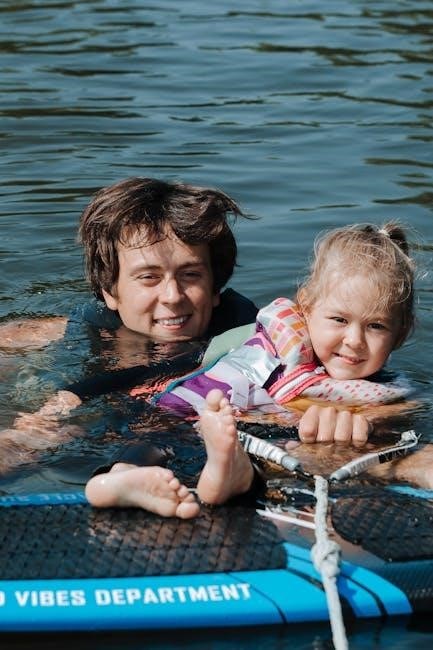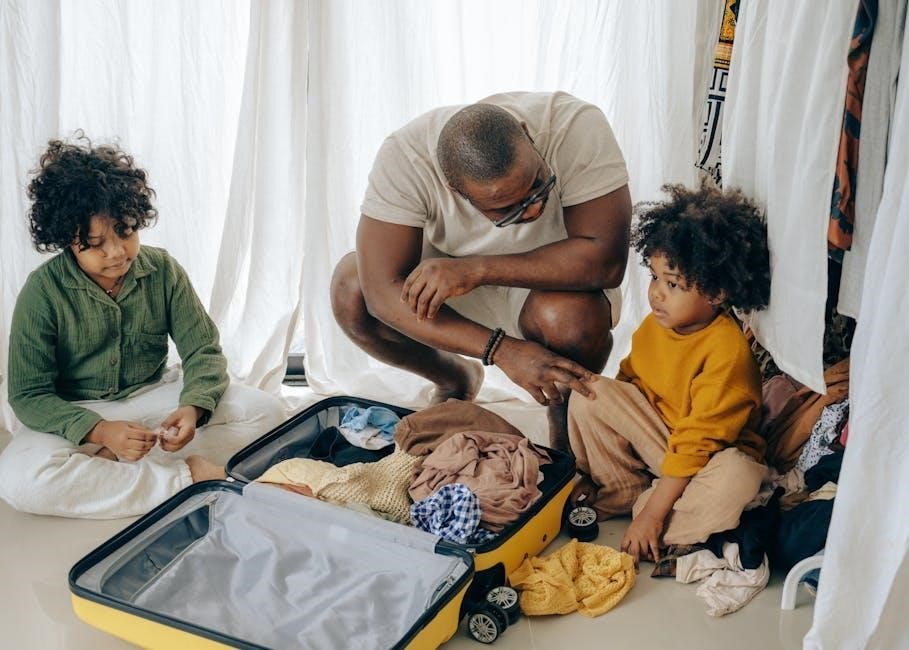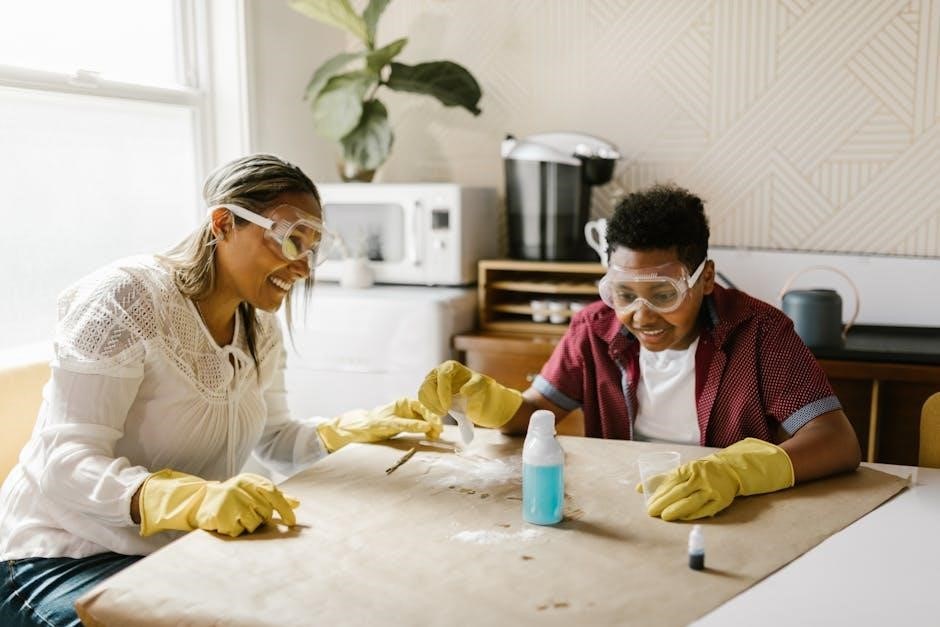Lifeguarding is a vital skill for parents to ensure water safety. It involves monitoring swimmers, responding to emergencies, and preventing accidents. Parents can learn lifeguarding techniques to protect their children and others in aquatic environments. Understanding water safety basics, recognizing distress signs, and knowing emergency procedures are essential for every parent. This guide provides comprehensive insights into lifeguarding, helping parents create a safer environment for their families.
- Learn water safety basics to prevent accidents.
- Understand how to respond to emergencies effectively.
- Discover how lifeguarding skills can save lives.
Understanding the Role of a Lifeguard
A lifeguard plays a critical role in ensuring water safety by constantly monitoring swimmers, preventing accidents, and responding to emergencies. Their primary responsibility is to maintain a safe environment, enforce pool rules, and provide assistance when needed. Lifeguards must possess strong swimming skills, quick thinking, and the ability to act decisively. They are trained to recognize signs of distress, administer first aid, and perform rescues. Effective communication and attention to detail are essential for preventing incidents before they escalate. Parents who understand the lifeguard’s role can better support water safety efforts and teach their children to respect these professionals. This understanding fosters trust and collaboration, ensuring a safer experience for everyone.
- Constantly monitor swimmers to prevent accidents.
- Respond quickly and effectively in emergencies.
- Enforce safety rules to maintain a secure environment.
By understanding the lifeguard’s responsibilities, parents can better appreciate their importance in water safety.
Why Lifeguarding is Important for Water Safety
Lifeguarding is crucial for preventing accidents and ensuring a safe environment in and around water. Trained lifeguards can identify potential hazards, respond swiftly to emergencies, and provide critical care until professional help arrives. Their presence deters risky behavior and builds confidence among swimmers. For parents, understanding the importance of lifeguarding helps them appreciate the need for professional oversight during water activities. Lifeguards are equipped with skills to handle drownings, injuries, and other incidents, making them indispensable in water safety. Their role not only saves lives but also educates the public on safe practices, creating a culture of awareness and responsibility.
- Prevents accidents by monitoring swimmers and enforcing safety rules.
- Provides immediate response and care in emergencies.
- Builds confidence among swimmers and promotes safe practices.
Lifeguarding ensures a safer environment, protecting families and communities.

Water Safety Basics for Parents
Teach children to swim, recognize distress signs, and avoid hazards. Supervise water activities and ensure a safe environment. Prevention is key to protecting lives and preventing accidents.
- Supervise children near water at all times.
- Teach basic swimming and safety skills early.
- Eliminate drowning risks in home pools.
These basics form the foundation of water safety for families.
Teaching Children Basic Swimming Skills
Teaching children to swim is essential for water safety. Start with floating and breathing exercises to build confidence. Gradually introduce strokes like freestyle and backstroke. Use flotation devices for support initially, then phase them out as skills improve. Practice in shallow water to ensure safety. Encourage regular practice to develop muscle memory and endurance. Celebrate progress to keep children motivated. Emphasize the importance of staying calm in the water. Teach them to enter and exit pools safely. Incorporate games to make learning fun. Ensure they understand basic water safety rules, such as swimming with an adult nearby. Patience and consistency are key to helping children become confident swimmers. These skills lay the foundation for lifelong water safety and enjoyment.
Recognizing Signs of Distress in the Water
Recognizing signs of distress in the water is crucial for parents to act quickly and prevent emergencies. Look for individuals who appear uncomfortable, with their head low in the water or mouth at the surface. They may struggle to stay afloat, showing jerky or uncontrolled movements. A person in distress might clutch onto objects or others for support. They may also exhibit labored breathing, gasping for air, or have a blank expression. Sometimes, distress can be subtle, such as floating motionless or leaning back unintentionally. Teach children to call for help if they notice these signs. Parents should remain vigilant and know how to respond swiftly to prevent drowning incidents. Early recognition is key to ensuring safety in aquatic environments.
- Head low in the water or mouth at the surface
- Jerky, uncontrolled movements
- Clutching onto objects or others
- Labored breathing or gasping
- Blank or panicked expressions
Preventing Accidents in and Around Water
Preventing accidents in and around water requires proactive measures and constant vigilance. Parents should always supervise children near water, ensuring they understand basic safety rules. Teach kids to enter pools feet-first and avoid running or pushing others. Secure pool areas with fences and gates to prevent unauthorized access. Keep flotation devices nearby and ensure children wear properly fitting life jackets in open water; Establish clear rules, such as no swimming alone or without adult supervision. Additionally, remove distractions like electronic devices while supervising. Regularly inspect pool and water equipment for safety hazards. By creating a safe environment and teaching preventive behaviors, parents can significantly reduce the risk of water-related accidents and ensure a fun, secure experience for their families.
- Supervise children at all times near water
- Teach proper entry and exit techniques
- Use safety barriers and flotation devices
- Set and enforce clear water safety rules

Lifeguard Training and Certification
Lifeguard training equips individuals with essential water rescue, CPR, and first aid skills. Certification ensures proficiency, requiring completion of accredited courses and passing practical tests.
Essential Skills Every Lifeguard Should Know
Lifeguards must master surveillance, rescue techniques, and first aid. Surveillance involves scanning the water for distress signs, while rescue skills include using flotation devices and safe retrieval methods. Lifeguards should also be proficient in CPR, AED use, and wound care. Communication is critical for coordinating rescues and reassuring victims. Knowledge of water conditions, such as currents and depth, is vital for effective responses. Stamina and quick decision-making are equally important to handle emergencies efficiently. These skills ensure lifeguards can prevent accidents and save lives when needed.
- Surveillance and quick response to distress.
- Proficiency in CPR and first aid techniques.
- Effective communication during emergencies.
- Physical stamina for prolonged rescues.
How to Encourage Your Child to Become a Lifeguard
Encouraging your child to become a lifeguard can be a rewarding experience for them. Start by highlighting the importance of water safety and the value of helping others. Share stories of lifeguards making a difference to inspire them. Provide opportunities to learn basic swimming and rescue skills through certified programs. Encourage them to participate in water-based activities to build confidence. Support their interest by researching local lifeguard training courses and ensuring they meet the age and skill requirements. Celebrate their progress and reassure them that learning takes time. Foster a positive attitude toward responsibility and teamwork, which are key qualities for a lifeguard.
- Highlight the importance of water safety and helping others.
- Enroll them in swimming and rescue skill courses.
- Support their training and celebrate their achievements.
- Encourage teamwork and responsibility.

Emergency Preparedness
Parents must stay calm and act swiftly in water emergencies. Recognize distress signs, like low head position or flailing arms, and know when to call for help immediately. Preparation is key to saving lives in critical situations.
- Stay calm and assess the situation quickly.
- Know when to call emergency services.
- Learn basic first aid for water-related injuries.
What to Do in Case of a Drowning Emergency
In a drowning emergency, act quickly and calmly. First, ensure your own safety and call 911 or alert someone nearby for help. If the person is in the water, do not jump in unless necessary. Use a flotation device to assist them if possible. Once the person is out of the water, check for breathing and pulse. If they are unresponsive, begin CPR with chest compressions and rescue breaths. Continue until professional help arrives. If the person is conscious, keep them calm and warm. Do not leave them unattended, as they may experience delayed symptoms like secondary drowning. Stay prepared and know the signs to act swiftly in emergencies.
- Call for professional help immediately.
- Use flotation devices if available.
- Administer CPR if the person is unresponsive.
- Monitor the person closely after the incident.
First Aid Basics Every Parent Should Know
Mastering basic first aid is crucial for parents to handle emergencies effectively. Start by assessing the situation and ensuring safety. For wounds, clean with mild soap and water, apply antibiotic ointment, and cover with a bandage to prevent infection. For minor burns, cool the area with cool water, avoid ice, and apply a topical ointment. For choking, perform back slaps for infants or abdominal thrusts for older children and adults. CPR is essential for cardiac emergencies—learn chest compressions and rescue breaths. Keep a first aid kit handy with supplies like bandages, antiseptics, and gloves. Stay calm, act quickly, and seek professional help when needed. Knowledge and preparation can make a significant difference in saving lives.
- Clean and dress wounds properly to prevent infection.
- Know how to respond to burns and choking incidents.
- Learn CPR techniques for emergencies.
- Keep a well-stocked first aid kit at home.
Knowing When to Call for Professional Help
Recognizing when a situation exceeds your ability to handle it is crucial for ensuring safety. If your child experiences severe injuries, difficulty breathing, or shows signs of shock, seek immediate professional assistance. For cardiac emergencies, such as a child collapsing or losing consciousness, call emergency services without delay. If you are unsure about the severity of an injury or illness, err on the side of caution and contact medical professionals. Lifeguards and paramedics are trained to handle complex situations, so never hesitate to request their expertise. Prompt action can prevent complications and save lives, making it essential to know when to rely on professional help.
- Severe injuries or difficulty breathing require immediate attention.
- Cardiac emergencies, like collapse or unconsciousness, demand urgent care.
- Uncertainty about the severity of an injury warrants professional intervention.

Communication and Trust
Open dialogue and trust are vital between parents and lifeguards. Clear communication ensures water safety and builds confidence in emergency responses. Transparency fosters a collaborative environment for protecting children.
- Encourage open conversations about water safety practices.
- Build trust through consistent and reliable communication.
- Foster collaboration to ensure a safe aquatic environment.
Creating Open Dialogue About Water Safety
Creating open dialogue about water safety is essential for fostering trust and awareness. Parents should actively engage with their children, discussing potential risks and safety measures. Encouraging questions and sharing experiences can help children understand the importance of water safety. Lifeguards and parents should also communicate openly, ensuring everyone is aligned on safety protocols and emergency procedures. Regular conversations about water safety habits, such as swimming in designated areas and avoiding distractions, can prevent accidents. By maintaining clear and consistent communication, parents and lifeguards can work together to create a safer aquatic environment for all.
- Encourage children to ask questions about water safety.
- Discuss potential risks and safety measures openly.
- Communicate regularly with lifeguards about safety concerns.
Building Trust Between Parents and Lifeguards
Building trust between parents and lifeguards is crucial for ensuring a safe and reassuring environment for children. Parents should feel confident in lifeguards’ abilities and judgment. Lifeguards can foster trust by maintaining professionalism, being approachable, and clearly communicating their roles and procedures. Parents can also build trust by engaging in open dialogue, asking questions, and expressing concerns. When lifeguards are transparent about their training and protocols, parents are more likely to feel assured. Trust is further strengthened when lifeguards demonstrate attentiveness and responsiveness to the needs of both children and parents. A collaborative relationship ensures everyone works together to prioritize water safety and emergency preparedness.
- Encourage open communication to address concerns.
- Demonstrate professionalism and attentiveness.
- Be transparent about training and safety protocols.
Legal and Ethical Considerations
Parents and lifeguards must understand legal responsibilities, such as duty of care and negligence laws. Ethical dilemmas arise in emergencies, requiring swift, impartial decisions. Privacy concerns, like sharing medical information, must be respected. Legal and ethical awareness ensures actions align with safety standards and moral obligations, protecting both children and lifeguards.
- Understand legal duties to prevent negligence claims.
- Respect privacy when handling medical emergencies.
- Make ethical decisions in critical situations.
Understanding Legal Responsibilities as a Parent
Parents have a legal duty to ensure their children’s safety, especially near water. This includes supervising minors and taking reasonable precautions to prevent accidents. Negligence, such as failing to monitor a child near a pool, can lead to legal consequences. Understanding local laws and regulations regarding water safety is crucial. Parents must also be aware of lifeguarding standards and ensure their actions align with these expectations. Legal responsibilities extend to knowing when to seek professional help and understanding liability in emergencies. Staying informed about these obligations helps parents prevent accidents and protect their children effectively. Knowledge of legal standards ensures parents can fulfill their role responsibly.
- Supervise children near water to prevent accidents.
- Understand local laws and safety regulations.
- Know when to seek professional assistance.
Ethical Dilemmas in Lifeguarding Scenarios
Lifeguarding often involves complex ethical decisions, particularly in emergencies. Parents acting as lifeguards may face dilemmas like prioritizing one swimmer over another or balancing privacy concerns with the need for immediate action. Ethical challenges also arise when deciding whether to intervene in non-emergency situations or when errors in judgment occur. These scenarios require a strong moral compass and adherence to training principles. Understanding ethical guidelines helps parents make responsible decisions that align with safety protocols and legal standards. Ethical dilemmas in lifeguarding underscore the importance of proper training and clear decision-making frameworks.
- Prioritizing safety while respecting privacy.
- Making tough decisions in high-pressure situations.
- Addressing errors in judgment ethically.

Technology and Resources
Modern technology enhances water safety through devices like smartwatches and apps monitoring swimmer activity. Drowning detection systems alert lifeguards quickly, improving response times. Online platforms offer training modules and safety guidelines for parents.
- Smartwatches track swimmer activity in real-time.
- Water safety apps provide emergency alerts.
- Online resources offer certified training programs.
Modern Tools for Water Safety Monitoring
Advanced technologies like smartwatches and water safety apps help monitor swimmers in real-time. These devices can detect unusual activity and send alerts to parents or lifeguards. AI-powered systems analyze swim patterns to identify potential distress, enabling faster responses. Additionally, underwater sensors and drones are being used to enhance supervision in pools and open water. These tools provide an extra layer of safety, giving parents peace of mind while their children swim.
- Smartwatches track swimmer activity and heart rates.
- AI systems detect signs of distress instantly.
- Drones and sensors monitor large water areas effectively.
Recommended Resources for Lifeguard Parents
Parents can utilize various resources to enhance their lifeguarding skills and knowledge. The American Red Cross offers certified lifeguarding courses and online refreshers. The YMCA provides aquatic safety training and community programs. Online forums and communities, such as Lifeguarding101, connect parents with professionals for advice and tips. Additionally, apps like Water Safety Guide offer tutorials and emergency response plans. Reputable websites like Pool Safely and Safe Kids provide downloadable resources and safety checklists. These tools empower parents to stay informed and proactive in ensuring water safety for their families.
- American Red Cross: Certified lifeguarding courses.
- YMCA: Aquatic safety training and community programs.
- Lifeguarding101: Online forums for professional advice.
- Water Safety Guide app: Tutorials and emergency plans.
